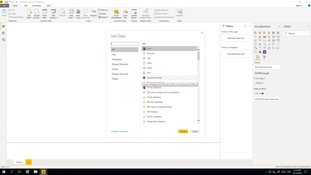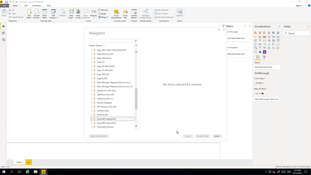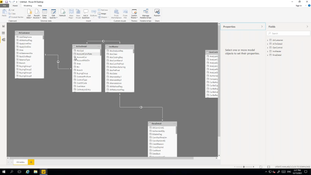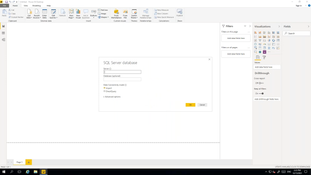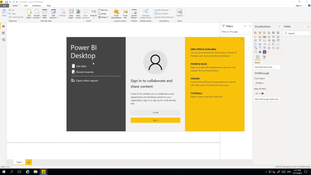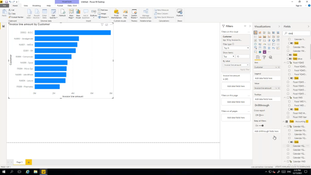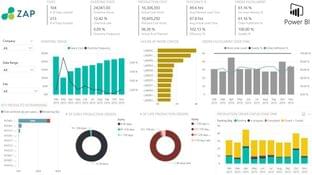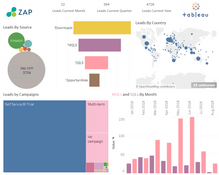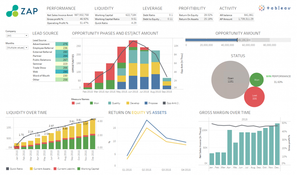ZAP BI Software
A cloud-based ETL (Extract, Transform, Load) software delivering dashboards and data to other BI platforms like Power BI, Tableau, or Zap Data Hub.
Product Overview
ZAP BI is an ETL (Extract, Transform, Load) software that provides a centralized view of business data through predictive analytics, ad-hoc analysis, real-time dashboards, and reports. It supports a wide range of data sources and complex analytical scenarios, bringing together all data across different systems onto the Zap Data Hub or Power BI. The platform’s data modeling functionality allows users to easily develop and duplicate manageable data models. ZAP’s automated discovery feature enhances the efficiency of data analysis, making it easier for businesses to make informed decisions.Pros
- Offers predictive analytics, ad hoc analysis and reporting
- Automated discovery and learning capabilities
- Optimized for reporting from Microsoft Dynamics, Sage, and Salesforce
Cons
- Limited integration with Google Analytics
- Cost-intensive for smaller organizations
Target Market
Small and medium-sized businesses across industry verticals that need to integrate various data sources for BI analysis.ZAP BI software provides a range of functionalities, including dashboards, key performance indicators (KPIs), scorecards, reports, ad-hoc analysis, alerts, and report scheduling. It integrates insights from multiple business systems.
Video Overview
ZAP BI Key Features
- Data Migration: Zap ETL (Extract, Transform, Load) consolidates and reconciles all data onto one platform. Users can choose between Power BI or Zap Data Hub Analytics to view analytics.
- Data Hub Analytics: The software includes standard features such as reports and KPIs. It also has advanced functionalities like automated management reporting, what-if analysis, and report scheduling. Users can drill down and view sales, inventory, AP/AR, and financial analytics.
- Discovery and Alerts: ZAP BI automates discovering and learning about business issues, sending immediate alerts with detailed reports on performance changes. The system allows for scheduled, distributed, and subscribed reports, which can be shared internally and externally. Users can view data on other BI platforms like Power BI and Zap Data Hub.
- Efficient Setup and Maintenance: For SQL Server data sources, ZAP CubeXpress accelerates deployment, automatically identifying tables and relationships for immediate use.
- Data Warehousing: Enables automated warehouse indexes with enterprise-level security. It brings all data into one platform with cloud data warehouse storage up to 100TB.
System Solutions
- Sage X3
- Sage 100
- Sage 300
- Sage Intacct
- SAP Business One
- SYSPRO
- Microsoft Dynamics 365 Business Central
- Microsoft Dynamics 365 F&O
- Microsoft AX
- Wiise
- Xero
Pricing
Zap BI offers three pricing plans: Silver, Gold, and Platinum. Pricing is based on which system you are integrating with, but it’s usually $615/month for the silver plan, with gold and platinum being quote-based. The lowest price for any plan is Xero’s silver, which is $310/month.
Product Overview
Developer Overview
Related Products
User Reviews of ZAP BI Software
No reviews have been submitted. Do you use ZAP BI Software? Have you considered it as part of your software evaluation process? Share your perspective by writing a review, and help other organizations like yours make smarter, more informed software selection decisions!

